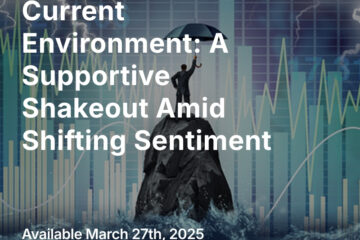Markets have staged a strong rally following the volatility that accompanied the start of the war in Ukraine. The S&P 500 has rallied 10% from its bottom, and the NASDAQ 15%. (The NASDAQ is still 10% down from its peak, and the S&P is down about 4% from its peak.) Given what we’ve written above about the outstanding questions, is this an untenable bear-market rally?
Here is some evidence that suggests it isn’t.
The impending inversion of the yield curve — the spread between two-year and ten-year Treasury rates — has a lot of analysts talking about recession. The “inversion” of this curve — when longer rates fall below shorter rates — has historically almost invariably presaged a recession. But there are many caveats that make a “run for the hills” approach to yield curve inversion unwise.
Tony Dwyer of Dwyer Strategy has commented on several of them — as he did during the previous episode of yield-curve anxiety back in 2019.
The first is that the inversion of the 2/10 curve typically precedes a market peak — by a median of 18 months, during which the S&P 500 returns a median of 17.7%. In short, historically, the inversion of the 2/10 curve is actually a bullish signal and not a bearish one, although of course there is a great deal of variance in the timeframe of a recession’s arrival.
The second is that the 2/10 curve is not the only curve we can look at — and a different curve — one that examines the spread between 3-month and 5-year Treasuries — may be more relevant. Typically, the inversion signals a coming recession because when banks make less from long-term loans than they pay in short-term financing, they are disincentivized to lend — and that contraction is ultimately what produces a recession.
But currently, the average duration of those loans is closer to five years. So how does the 3-month/5-year curve look? Indeed, it is steepening — a rare historical example of when these two curves are going in opposite directions.

Source: Canaccord Genuity
The last time this was happening was 1994 — when the Fed was tightening, and we narrowly skirted a recession as we moved into the big bull run of the latter half of the 1990s. This time will not necessarily be like that — but it is good reason not to get irrationally bearish about stocks.
Further, as long as the massive undertow of passive investing continues, there remains a bias towards a market “status quo.” If and when this mutual reinforcement breaks, it will unravel with unpredictable outcomes. For now, it is still in force.
Earnings Season Starts Soon — Pay Attention
The market has priced in a lot — but one thing it may not have priced in is a set of big disappointments in earnings, or a swath of reduced forward guidance as companies contemplate their rising input costs for materials and logistics in the back half of the year. So, with earnings season approaching, as usual, we’ll be listening carefully to a lot of calls. Bullish or bearish, earnings are “the tell” — of whether or not we need to be pricing in true stagflation.
What We Like
The resolution of Russia’s war in Ukraine, or a ceasefire, could lead to a relief correction in many commodities that have run up. However, we believe a period of structurally higher inflation has arrived and is likely to be enduring for many reasons — several years at least. Further, relief at the cessation of hostilities may be relatively brief, if Russia is not sufficiently humbled to justify the walk-back of the sanctions imposed on her — and those sanctions will continue to snarl and fracture the global distribution of many commodities.
We are still fundamentally bullish on tech-adjacent commodities and on the reshoring of critical commodity production — as well as Fourth Industrial Revolution industrial production, such as semiconductors. We see lithium, copper, rare earths, nickel, and oil and natural gas as long-term opportunities, and grains and other foodstuffs as short-term opportunities.
As we said above, we do not think the time is here to sell stocks and run for the hills. Competent management in well-positioned companies in well-positioned industries is capable of turning inflation into earnings that grow faster than inflation. Healthcare seems particularly insulated from both valuation concerns and geopolitical concerns; technology is similar in certain respects. In both cases we look for “growth at a reasonable price,” avoiding grossly overvalued “hope and dream” companies with exciting stories and earnings visible only years in the future.
We suggest a barbell with commodities and hard assets on one side, and innovation on the other. Crypto could claim a place in either side of the barbell — but whichever of them it’s in, it deserves a place in your portfolio.
And needless to say, we would avoid bonds. Bond yields are now not paying you enough for the risk you’re taking when you go beyond cash-equivalent very short-term paper.
Thanks for listening; we welcome your calls and questions.



